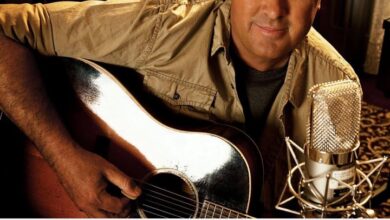Music Enthusiasts in Their 70s Uplifted by Procol Harum’s Enduring Melodies
Procol Harum’s “A Whiter Shade of Pale” stands as a cornerstone of rock music history, celebrated for its haunting melody, evocative lyrics, and enduring popularity since its release in 1967. The band, formed in London in 1967, initially consisted of Gary Brooker on vocals and piano, Robin Trower on guitar, Matthew Fisher on organ, Dave Knights on bass, and B.J. Wilson on drums. Their unique blend of rock, blues, and classical influences set them apart in the burgeoning psychedelic rock scene of the time.
Gary Brooker, with his distinctive voice and emotive delivery, quickly became recognized as the driving force behind Procol Harum’s sound. His ability to infuse each lyric with depth and meaning contributed significantly to the band’s appeal. “A Whiter Shade of Pale,” their debut single, catapulted them to international fame with its poetic lyrics and Fisher’s iconic organ riff, inspired by Bach’s “Air on the G String.”
The song’s success was unprecedented, topping charts worldwide and becoming an anthem of the summer of love. Its enigmatic lyrics, penned by Keith Reid, combined with Brooker’s soulful interpretation, created a timeless classic that resonated across generations. Over the years, “A Whiter Shade of Pale” has been covered by numerous artists and featured prominently in films, cementing its status as a cultural touchstone.
In 2006, Procol Harum revisited “A Whiter Shade of Pale” in a spectacular live performance at Ledreborg Castle in Denmark. This event marked a significant moment in the band’s career, showcasing their enduring musical prowess and artistic evolution. Teaming up with the Danish National Concert Orchestra and Choir, Procol Harum crafted a rendition that added a new dimension of grandeur and sophistication to the beloved classic.
Led by Gary Brooker’s seasoned vocals and masterful piano playing, the performance at Ledreborg Castle captured the essence of the original while introducing lush orchestral arrangements and choral harmonies. The orchestra, underlining the band’s classical influences, enhanced the song’s ethereal quality, creating a captivating sonic tapestry that mesmerized the audience and viewers alike.
The concert series featuring Procol Harum and the Danish National Concert Orchestra and Choir was a testament to the band’s enduring appeal and their ability to transcend musical boundaries. The collaboration seamlessly integrated rock and classical elements, breathing new life into Procol Harum’s extensive catalog of songs. Tracks like “Grand Hotel,” “A Salty Dog,” and “Conquistador,” all featured in the live album from the Ledreborg Castle concert, showcased the band’s versatility and the orchestra’s ability to enrich their music.
Gary Brooker’s performance during the Ledreborg Castle concert was particularly noteworthy for its emotional depth and technical brilliance. His interpretation of “A Whiter Shade of Pale,” backed by the orchestral arrangement, underscored his status as a consummate musician and storyteller. Each note resonated with a poignant intensity, drawing listeners into the song’s melancholic narrative and timeless allure.
The release of the live album in 2009 further immortalized the Ledreborg Castle concert, allowing fans to experience the magic of Procol Harum’s music in a live orchestral setting. The album received widespread acclaim for its pristine production and the band’s impeccable performance, solidifying their legacy as pioneers of progressive and symphonic rock.
Beyond their musical achievements, Procol Harum’s collaboration with the Danish National Concert Orchestra and Choir symbolized a convergence of artistic vision and cultural resonance. The majestic backdrop of Ledreborg Castle added a historical and visual dimension to the performance, creating an unforgettable atmosphere that mirrored the song’s timeless appeal.
In conclusion, Procol Harum’s rendition of “A Whiter Shade of Pale” at Ledreborg Castle remains a seminal moment in the band’s storied career. Gary Brooker’s masterful vocals, coupled with the orchestral and choral arrangements, elevated the song to new heights of grandeur and sophistication. This collaboration not only reaffirmed the song’s status as a masterpiece of rock music but also showcased Procol Harum’s enduring influence and innovation in the genre.





